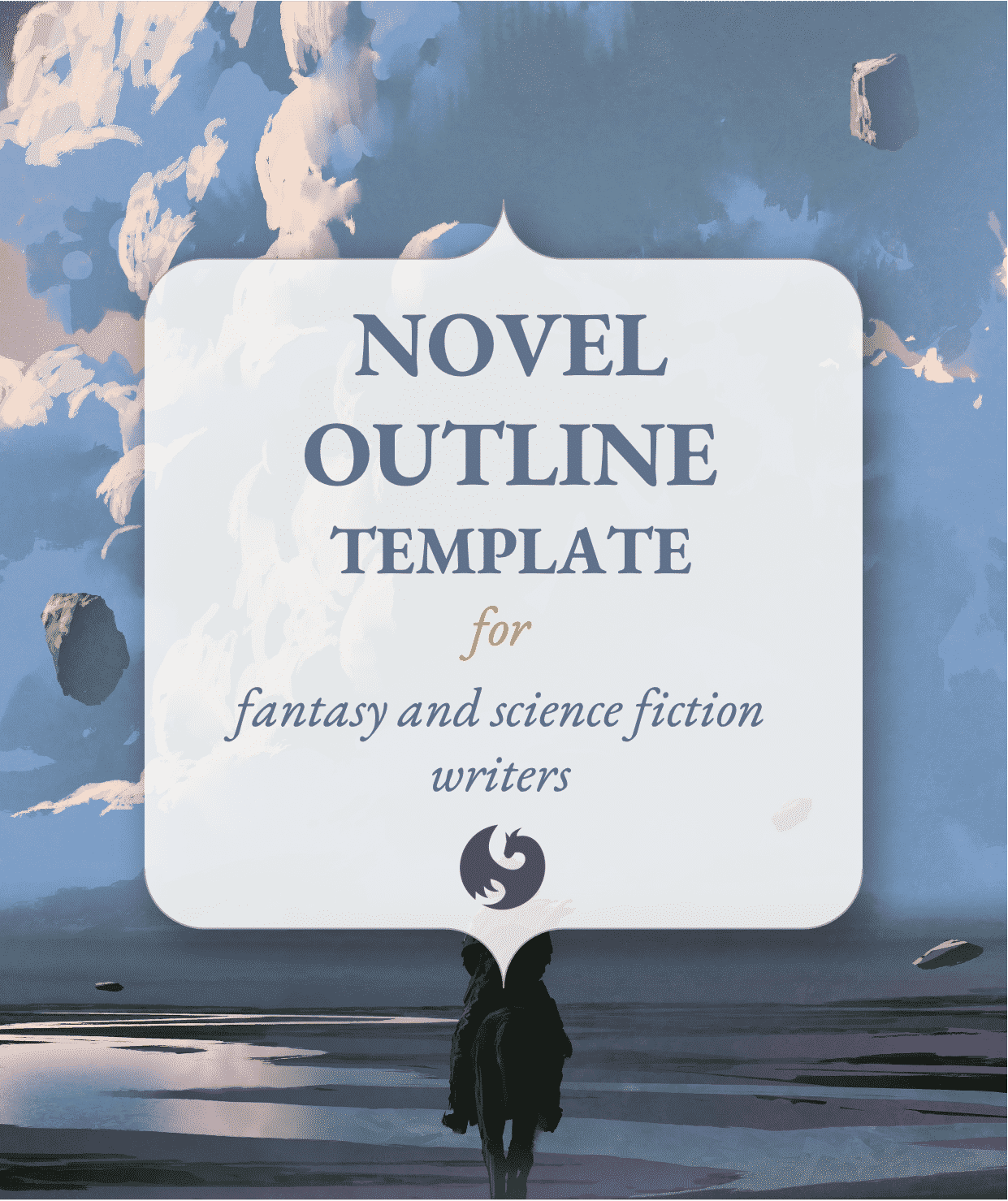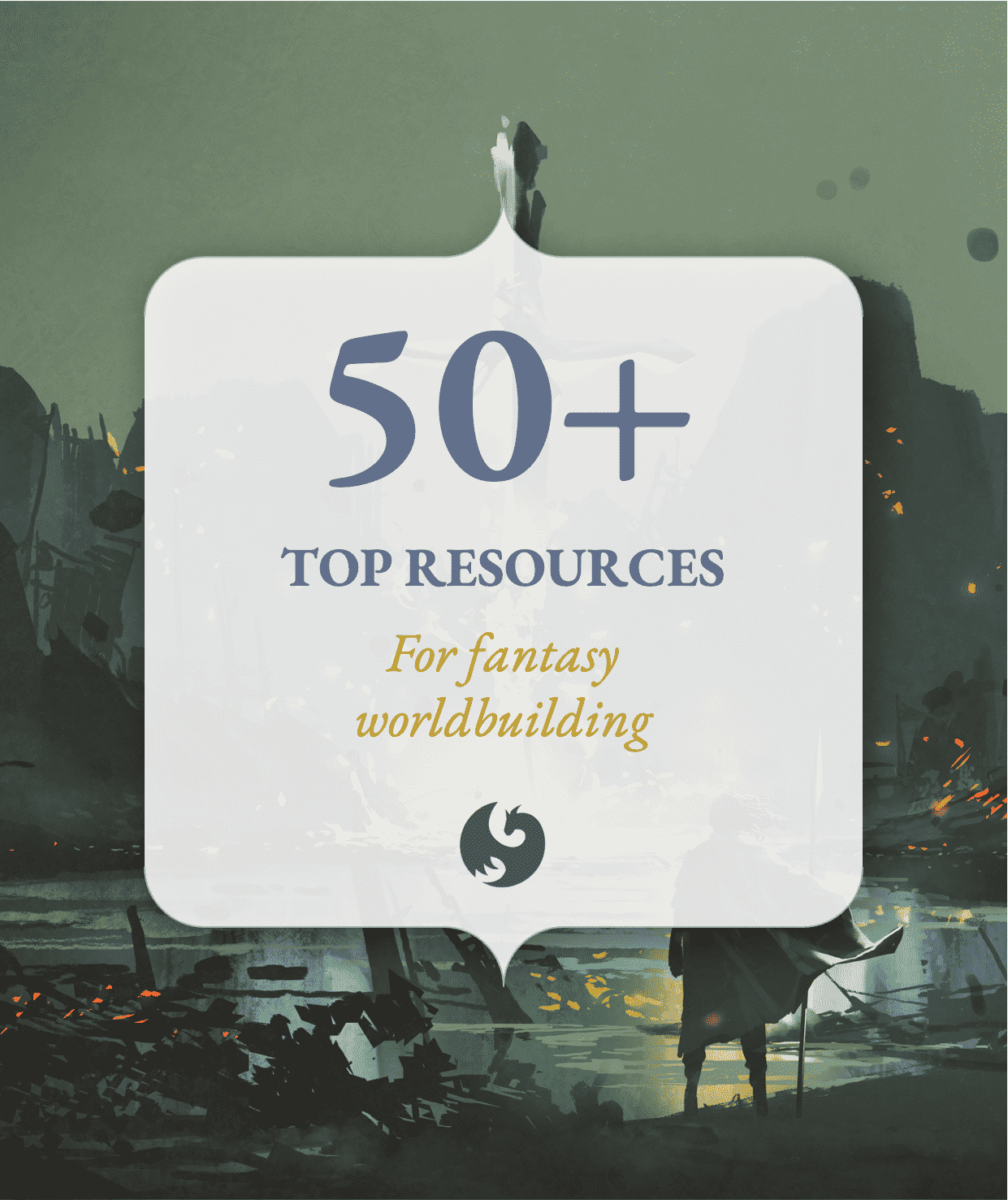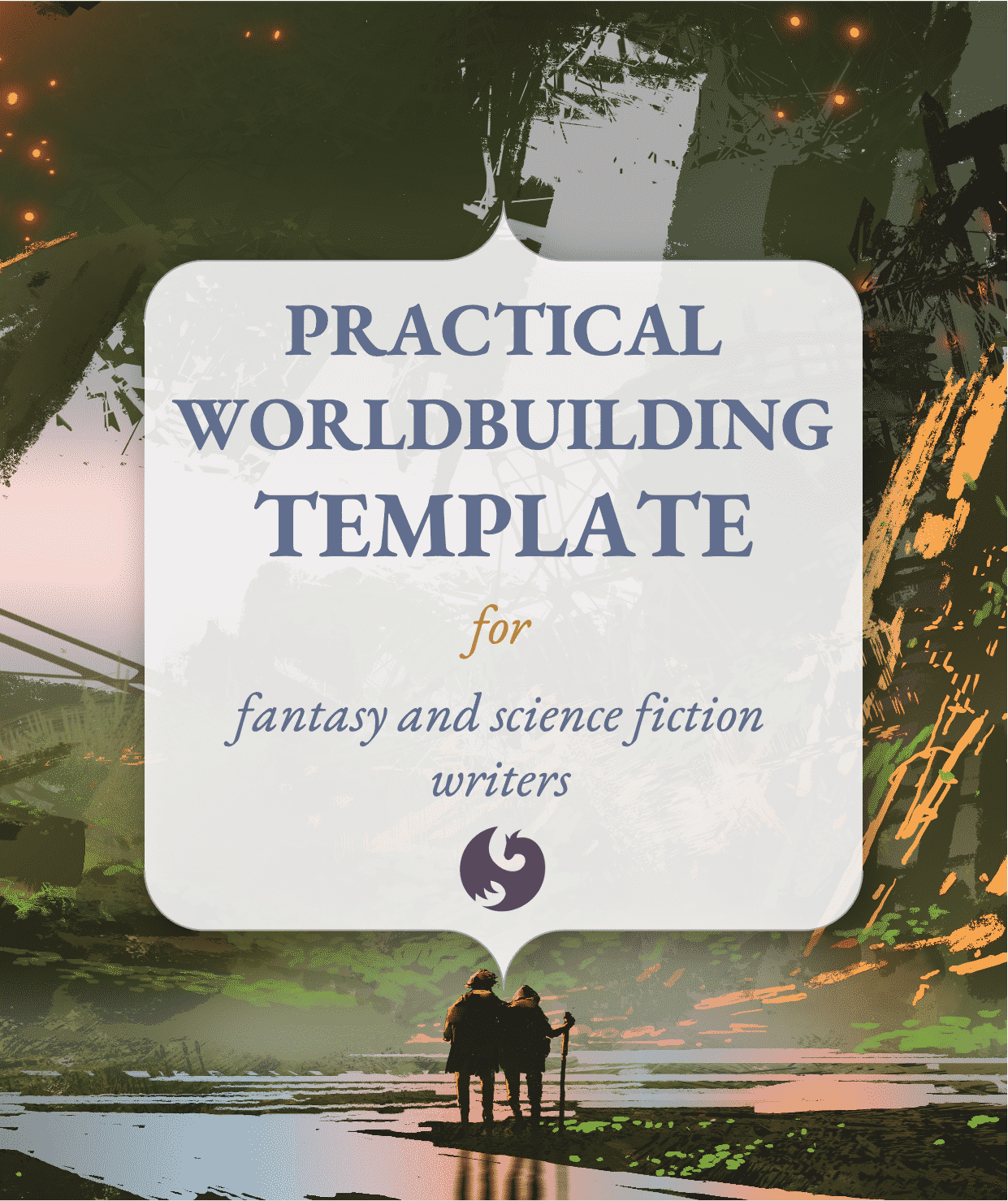How to Write Fantasy: The Ultimate Guide
by Fabled Planet

In some ways, fantasy is the most challenging genre to write. There are no textbooks to read on magic systems and no images to Google of the beautiful storyworld you have in your mind. To a greater extent than in other genres, you’re on your own.
But that’s also one thing that makes writing fantasy so thrilling.
Know, however, that you’re never entirely on your own. This 10-step guide will provide some structure to help you navigate the course of writing a fantasy story. It applies to tales of all lengths – series, novels, novellas, and short stories.
Are you ready for an adventure?
Step 1: Gather inspiration
Ask, and most writers will tell you that their inspiration comes from many different places. Finding the inspiration for a story is mostly about noticing what interests you, playing with connections between those things, and thinking about how they could be rather than how they are. But where do you get these ‘things’?
Use what you know. What would your job or hobby look like if magic were involved? Who in your life would make an interesting villain? Does that old building you walk past every day look like it came straight out of another world or era? While imagination is paramount in fantasy, adding a few elements that you can describe based on personal experience adds a dimension of realism.
Use what you read. One important aspect of being a writer is reading – that means reading fantasy, other fiction, and nonfiction. This is as much about inspiration as it is learning the craft. Take bits and pieces you like from your reading – an interesting person, place, event – and write your own spin on it. Even if your inspiration comes from someone else’s fiction, this doesn’t have to be plagiarism or copycat writing. Most authors’ work is inspired stories that came before it, whether that’s last year’s bestsellers or myths written thousands of years ago.
Memories. When a memory doesn’t end up in the rubbish bin inside your brain, there’s probably a reason. What about that moment makes it stay with you? And don’t limit yourself to good memories – the worst day of your life could make a brilliant ‘dark night of the soul’. ‘My son died,’ bestselling fantasy author Neil Gaiman once wrote. ‘And I was hurt, but I watched my hurt, and even relished it, a little, for now I could write a real death, a true loss.’
Dreams. Dreams are rarely coherent enough to form a complete story, but their moments, people, and scenarios can be intriguing jumping-off points. Think of them as writing prompts.
Step 2: Roughly sketch out the story
This can be images, scene ideas, snippets of dialogue or description – whatever you have so far. Write it all down, gather images representing the ideas, hold it all in your head. Do whatever you need to do lay out all your ideas so far for examination.
Now think about what these things suggest. You probably sense that they go together, but how? Could that tower you see in your mind be the site of the climax? What happens there? Perhaps the girl with the flowing hair and star-and-moon tattoo is your main character? Why does she look so sad? Ask yourself questions about these elements and make connections between them until you have something that sounds like a fantasy story.
Novel outline template

Step 3: Craft a one-sentence summary
How will you know when your inspiration has gifted you with a story with book potential? When you can summarise what your story is about in just one sentence. Challenge yourself to include:
1) Your main character(s). Rather than names, try using an intriguing adjective + noun combination to convey the essence of the character or something special and interesting about them, such as ‘a one-armed archer’ or ‘a vagabond time-traveller’. This will not only help you get specific about your protagonist(s) but also help ensure they don’t end up becoming the humdrum reader stand-in seen in many manuscripts. All the better if it’s clear how this character attribute relates to the setting or story conflict.
2) An idea of your world. For example, ‘in a land/world/future/dimension where…’ Again, highlight what’s interesting about it, and try to make the connection between the setting and the conflict clear.
3) The main character’s goal. Stories tend to go nowhere when the main character isn’t actively pursuing something. Foiling the antagonist’s plans can also be a goal.
4) Who or what is stopping them from achieving it. This is your antagonist or antagonistic force. As with the main character, try to signal what’s interesting and formidable about them. For example, ‘his vengeful lover’ or ‘a funhouse with no exit that slowly robs visitors of their sanity’.
5) And how. And this is the main story conflict – the dilemma or challenge that will come to a head at the climax.
Here’s an example based on a fantasy novel you probably know, C.S. Lewis’s The Chronicles of Narnia: The Lion, the Witch and the Wardrobe:
When four British siblings enter a magical land through a wardrobe, three must rescue their brother from the cruel sorceress-queen whom the four of them are prophesied to overthrow with the help of the original king, the lion Aslan.
It’s a little clunky, but it will do.
1) Main characters – four British siblings
British isn’t the most exciting epithet, but what’s interesting about the main characters in this book is the juxtaposition of children from our world with a magical land with sorceresses and an anthropomorphic lion.
2) An idea of the world – a magical land through a wardrobe
Narnia is a hodgepodge of fantasy tropes, so it’s hard to pin it down in a few words. But what’s the thing everyone remembers about Narnia? That you can get into it through a wardrobe. What’s one intriguing thing that stands out to you about your fantasy world?
3) Main characters’ goal – prophesied to overthrow with the help of the original king, the lion Aslan
The big-picture goal of the story is to overthrow the queen, restoring order to the land.
4) Antagonist – cruel sorceress-queen
This is Queen Jadis, the White Witch. What makes her an interesting and formidable adversary is her cruelty and magical powers.
5) Story conflict – must save their brother
This is how the protagonists and antagonist clash. Per the prophecy, all four of the children are needed to achieve the goal of overthrowing the queen. In order to fulfil this goal – and avoid losing him for ever – the others have to get their brother out of her clutches.)
Write as many versions as it takes to get one that makes you think, ‘That is exactly what I want to say, and it sounds like something I would want to read.’ The premise should inspire you and ring with truth.
50+ top resources for fantasy worldbuilding

Step 4: Choose a niche
Even if it changes as your story evolves, it’s a good idea to start out with some idea of where it might fit in the current fantasy market. If you’re new to fantasy or have mostly stuck to the classics, go to the fantasy section of your local bookstore – or a website like Goodreads – and read as many blurbs as you can, paying special attention to those whose covers suggest a story similar to the one percolating in your mind. Notice how these books are called and categorised by the blurb, reviews, or retailer and see if your story fits any of these patterns. Read the ones that most pique your interest. Don’t spend so much time reading that you never get around to writing, but do develop a taste for good writing in the genre as it exists today. (When you’ve become able to tell what’s been done to death and what’s fresh, you’re on the right track.)
Writing to trends is risky and almost always less rewarding than following your own inspiration. The goal is to find where the market and your personal vision intersect.
Don’t feel you have to stick to the usual labels in conveying the flavour of your idea. If a category like ‘epic fantasy’ or ‘grimdark’ just doesn’t sound like a good fit, consider a mash-up of comp titles, which are books that are similar in premise to yours in some way. For example, you might frame your middle-grade fantasy about a boarding school for mermaids as ‘Harry Potter meets The Little Mermaid’. Or your YA alternative history as ‘Vlad the Impaler as a teenage girl’ (the premise of Kiersten White’s And I Darken).
(Just don’t claim to have written ‘the next Harry Potter/Lord of the Rings/Game of Thrones/other insanely famous title’. Most readers and agents don’t appreciate overselling; if your book is really that good, the writing will speak for itself. They also don’t want a replica of yesterday’s bestseller – they want ‘the same but different’, a new spin on an idea that’s easy to connect with.)
Note that this also applies if you’re aiming for self-publishing rather than traditional. Potential readers will have a hard time finding your book and deciding whether they’re interested in it if they can’t relate it to anything they’ve seen before.
Step 5: Build your world
Before you start writing, it’s a good idea to have some idea of the world your characters live in – climate, culture, social structure, geography, etc. Some writers like to create a whole ‘bible’ about their workings of their storyworld. Others like to come up with the specifics as they go along, then edit to make sure it all makes sense. Most are somewhere in between.
Your world does not need to have dragons, castles, knights, or elves to be classed as fantasy. What makes a fantasy world fantasy is the presence of magic or another supernatural element. Usually, that magical element will feature heavily in the story (it’s what many readers are picking up the book for, after all), but it doesn’t have to be the focus.
A fantasy story might be set anywhere from a distant planet in another dimension to modern-day London. This means that what information you need to gather to build and portray your world will depend on the story. But one thing is certain: you’ll have to do research. Most of this will probably be on the internet, but for some details, you might want to consult books or even visit a place similar to a location in your story world in person.
If you want help getting started, we’ve written a whole article detailing one possible approach to worldbuilding. We’ve also put together a list of 50 resources to help you with your wordbuilding.
Step 6: Create character profiles and arcs
When getting to know your cast, learn each character’s greatest inner need, greatest fear, and greatest inner wound in the context of the story – and make sure you see how these three things are related.
For example, you might have a character on a quest. If she completes it, she’ll win enough gold to give her independence, her need. She believes financial independence will prevent her fear of being helpless from being realised. This terror of being dependent on another can be traced back to wealthy parents who told her she wouldn’t be able to survive without their money.
There. Just three sentences, and you can probably already guess quite a lot about how this character will behave on the quest and how she’ll interact with others
Of course, there’s plenty more that goes into a character and their arc. How they talk. How they look. How they change over the course of the story through obstacles that challenge their need and fear and force them to reconcile their past wound and their present.
Study your favourite characters in other writers’ stories, as well as the people in your life. How were they introduced? How were they shown to change?
Our novel outline template offers more ideas for fleshing out your characters.
Step 7: Develop a plot
Combine scene, theme, and worldbuilding, and character ideas to develop a plot. Plot is the actual, concrete events that make up the story. However, it’s not sufficient to lead your characters through a string of loosely connected events until you reach 100,000 words or so. You need a structure.
There are a number of story structure models you might use for this, from the basic five-point structure to more elaborate guides, such as the Save the Cat beat sheet. It’s worth studying these models and trying them all out at least once. Some new writers worry that following a structure will make their story formulaic, but the truth is that all but a handful of the most celebrated stories in history have followed these same patterns – and they’re certainly not all alike! The creativity lies in how you tell your story within the framework, using it in clever ways that subvert reader expectations.
Practical worldbuilding template

Whether you’re a plotter (a writer who plans the story in detail before writing) or a pantser (a writer who starts drafting without a clear idea of how the story will unfold), you’ll contend with the basic plot points at some point. Plotters do the work up front; pantsers do it after an initial ‘discovery’ draft – or ten. These are equally workable – and equally challenging – approaches, so do what works for you after experimenting with both.
Step 8: Break the plot down
Chances are, your first attempts at articulating your plot are going to be vague. ‘Neth learns he is the Chosen One’ is a fine plot point, but it doesn’t tell you anything about how he learns this, who’s there at the time, how he responds, etc. For that, you may need to create a more detailed picture of your story.
This could be a scene list, a detailed beatsheet, a long synopsis, even a hundred sticky notes stuck on your bedroom wall. It doesn’t matter how you do it, and how thorough you want to be with it is up to you. But even if you’re leaning toward the pantser side, it can be helpful to start thinking about your story in terms of concrete, flesh-and-blood scenes rather than abstract concepts or feelings.
Step 9: Draft – and revise
Write however many drafts it takes until you feel you would be happy to share it with others. The first draft of any story, by anyone, is almost always a poor version of itself. So avoid going into it expecting to be ready for publication as soon as you type THE END. There’s a common saying in the writing world: ‘Writing is rewriting.’
Each time you finish a draft, let it sit for at least a few weeks (the longer, the better) so you can come back to the manuscript with fresh eyes. Particularly if you’ve been reading – both fiction and writing craft books and articles – during these breaks, you’ll catch all kinds of inconsistencies and weaknesses you missed before. You may even have insights into how to make the good parts even better.
Step 10: Hire an editor
By all means, share your writing with your loved ones and critique group. Bask in the glow of their enthusiastic support. You deserve it for making it this far!
But it’s best not to rely on their feedback to gauge how well-told your story is. These readers mean well, but few are likely to have the time or expertise to help make your manuscript as good as it can be.
It’s also all but impossible to go it alone. You know your story better than anyone, but by the time you’ve written and revised the full manuscript, you’ll be too close to the work to see it objectively.
Content editors are experts in the craft of storytelling and in articulating a story’s strengths and weaknesses. They can give you ideas to take the story to its full potential without compromising your vision. Having someone like this on your side can make all the difference, not only for your current project but also throughout your life as a fantasy writer.
Try it!
As you work through these steps, remember that fiction writing is rarely a linear process. It’s not uncommon to make it all the way to the drafting stage, realise the story isn’t working, and return to mining your brain for new inspiration – seemingly going right back to where you started. When order fails, embrace the chaos. And when the chaos becomes overwhelming, you can always return to resources like this article to restore order.
Do you write fantasy or science fiction?
Join our email list for regular writing tips, resources, and promotions.
